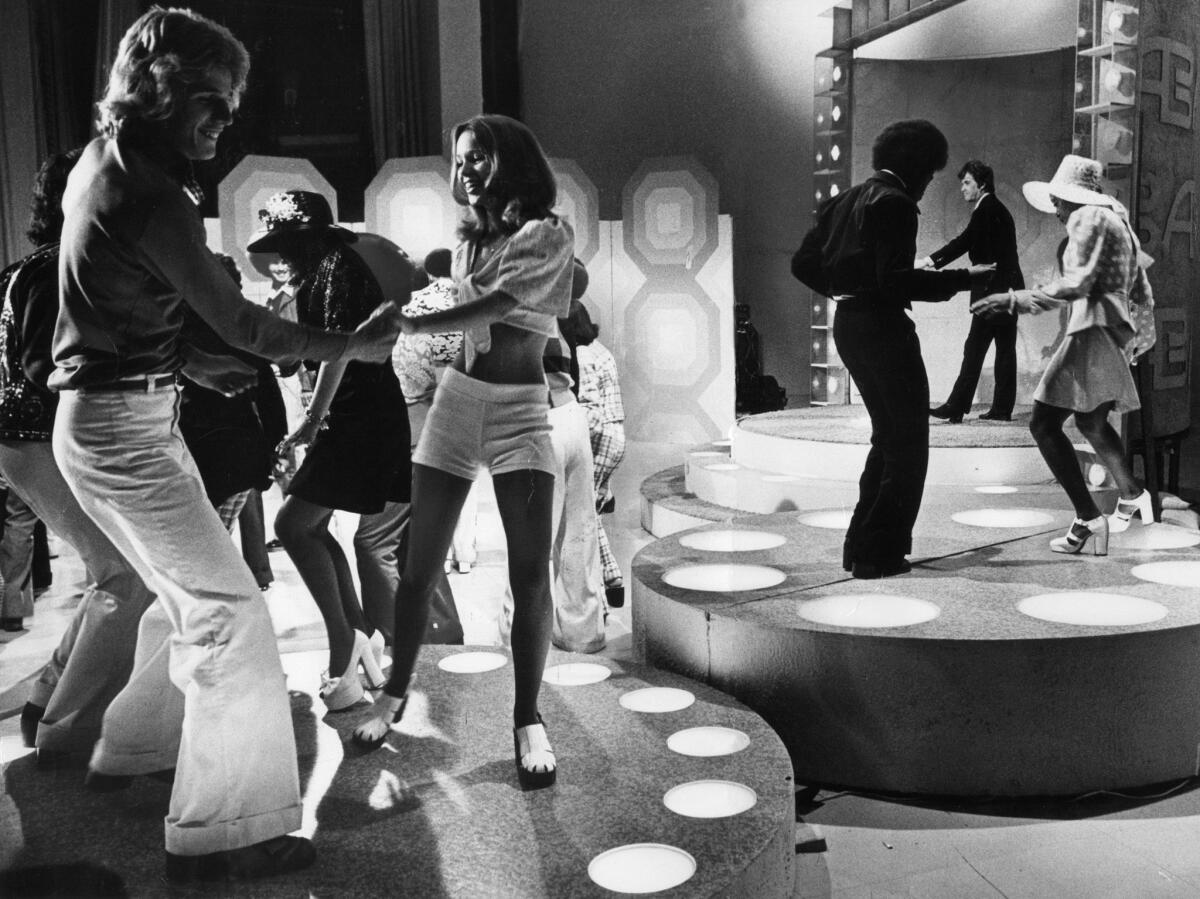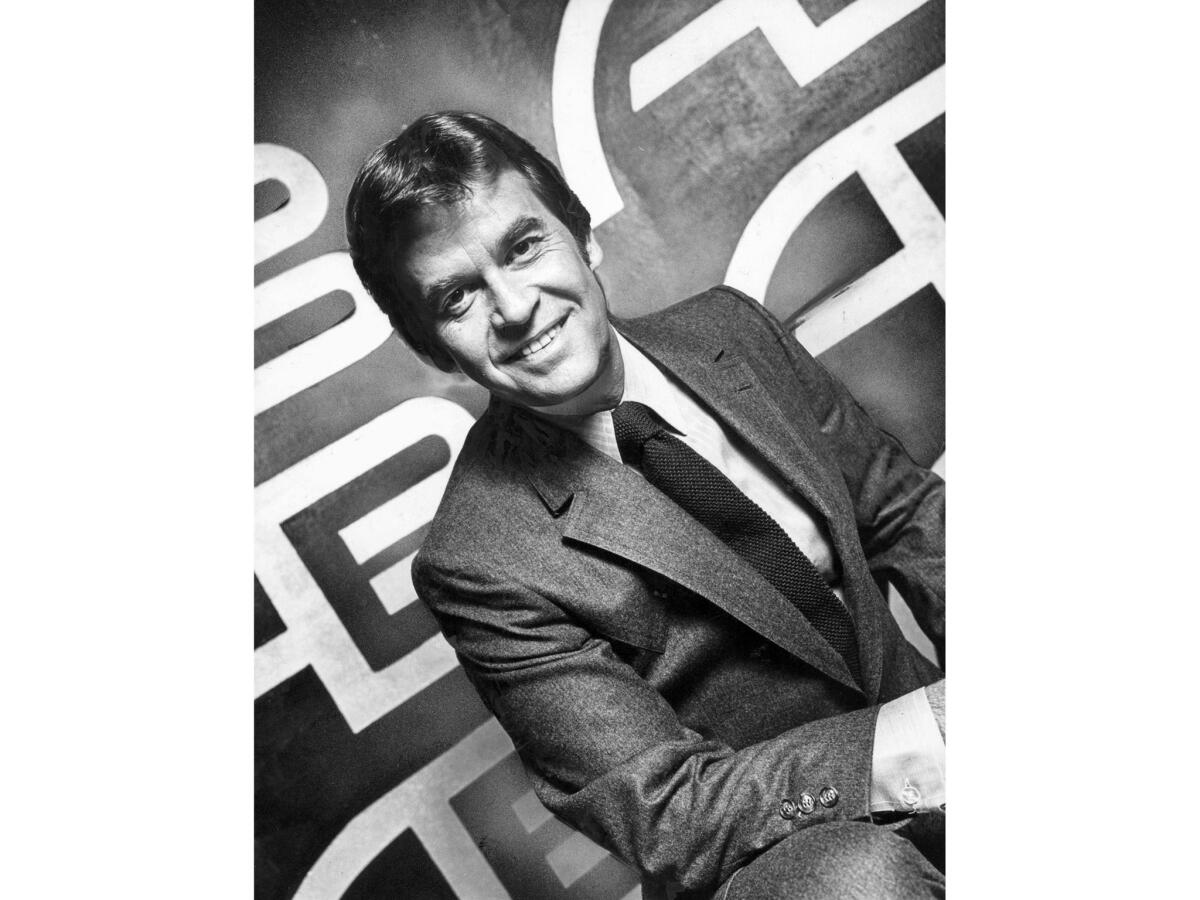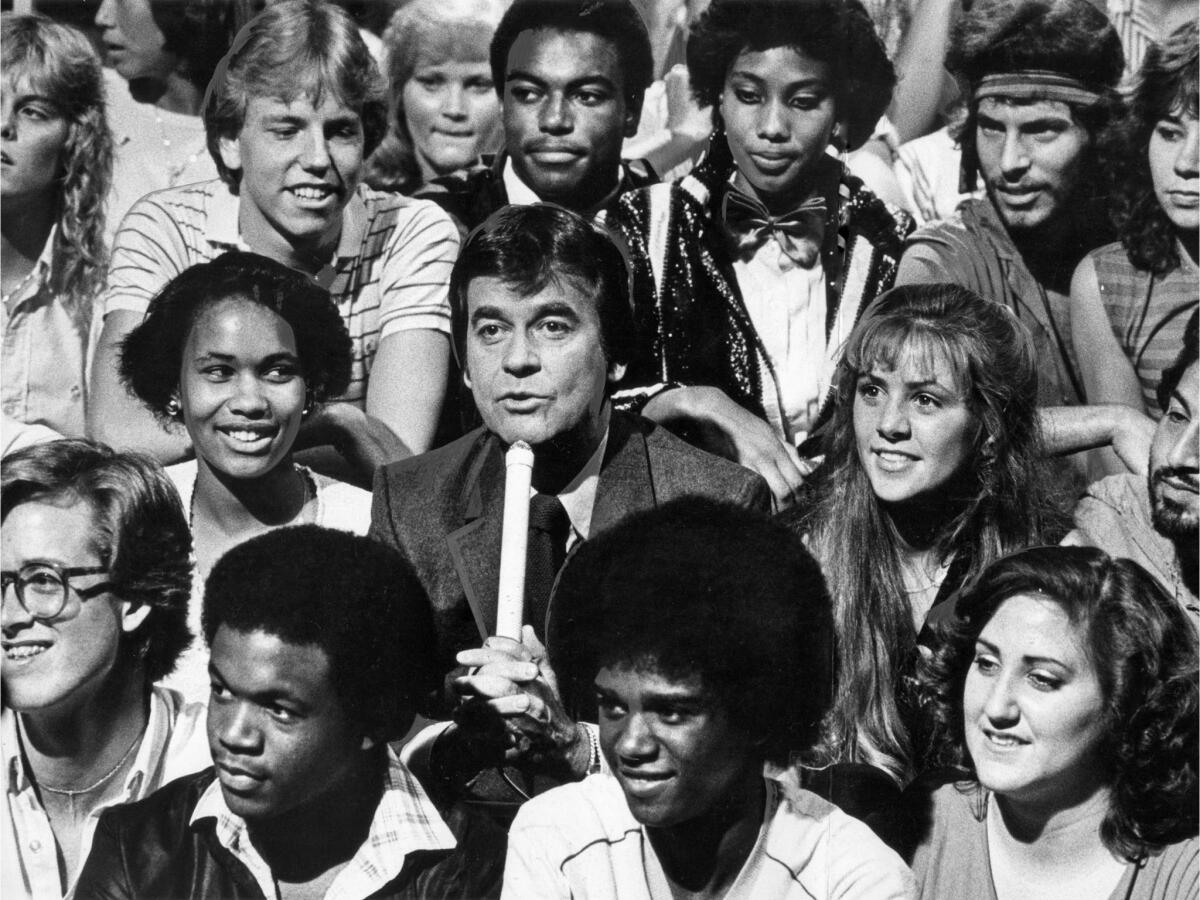From the Archives: The 20th anniversary of ‘American Bandstand’

- Share via
In 1956, radio disc jockey Richard “Dick” Wagstaff Clark took over as host of “Bandstand” – a Philadelphia television show. The following year, ABC television picked up and renamed the show “American Bandstand.” In 1964, Dick Clark and the show relocated to Los Angeles.
For “American Bandstand’s” 20th anniversary, Mary Murphy reported in the June 19, 1973, Los Angeles Times:
Once upon a time, 40 million American teenagers rushed home from school to catch Dick Clark’s American Bandstand for an hour and a half each afternoon. Like soap operas for adults, Bandstand became a vicarious thrill for a whole viable subculture of teen-agers who were in search of their own identity.
At 29, and earning $400,000 a year, Clark could sell 100,000 records in 24 hours with one plug on air. He could create stars like Fabian and Frankie Avalon. He often received as many as 8,000 requests to fill 300 seats at WFIL-TV in Philadelphia.
On any given day 500 kids lined up the streets outside of the double red doors, clamoring to get into the studio. He and the regular dancers normally received 15,000 fan letters a week, and up to 900,000 a week during the national dance contests.
He was the boy wonder of the Howdy-Doody generation. And then he turned that Beechnut grin on parents.
Adults who were scared and confused by this rock fervor were soothed by Clark’s slicked-down boyishness, and as a result they not only let their kids watch but, more important, let them buy the music.
By 1959 Clark was the virtual dictator of pop music.
That was 14 years ago and 2,500 miles away.
Last week 100-150 hard-core fans gathered at the aging Hollywood Palace on Vine St., some to renew old acquaintance with Clark, but mostly to share in what turned out to be a 12-hour taping for a 90-minute anniversary program that airs tonight on Channel 7 from 11:30 p.m. to 1 a.m.
A slicker, more cynical Sunset Strip-mod Clark warmed up the young audience. His voice was soothing as ever.
His haircut could best be described as a sculpted shag kept in place with hairspray, and except for the middle-age spread which hung over the belt of his powder-blue flared jeans he looked 10 years younger than during his reign. At least a dozen times during the taping people were to remark, “Isn’t it incredible that he looks so young?”
Clark considers the audience to be as much a part of the success of Bandstand as the acts, so he asks them to show enthusiasm, bounce their heads, clap their hands. He has relied on this participation theory since he took over the already existing Bandstand show nationwide in 1957. (The show began 20 years ago).
Sitting on the edge of the stage, legs wrapped around a microphone cord, Clark outlines the day’s activities. Live appearances by Three Dog Night (representing the 70s), Paul Revere and the Raiders (60s) and Little Richard (50s), will be followed by live guest spots with Johnny Mathis and Annette Funicello, later referred to by a stagehand who couldn’t remember her name as “the mouse girl.” …
The day of the taping when he learned that Little Richard was sick and would be detained at least three hours, he asked the audience to stay, “not because we need you but because he will when he gets here.”
Little Richard limped to the stage almost 11 hours after the taping began. Within minutes he was dancing on the piano and jumping into the remaining audience of not more than 40 people, singing a rousing chorus of “Tutti-Frutti,”
When the music stopped he was carried to a waiting limousine.
Twenty years is a long time.

Dick Clark died on April 18, 2012. The Los Angeles Times published an obituary headlined “Dick Clark dies at 82: He introduced America to rock 'n' roll.”
This article includes three additional 1981 photos by staff photographer George Rose, published with a profile on Clark in the June 21, 1981, Los Angeles Times. The top photo, by Mary Frampton, accompanied Mary Murphy’s article in the June 19, 1973, Los Angeles Times.
This post was originally published on June 21, 2016.


Sign up for The Wild
We’ll help you find the best places to hike, bike and run, as well as the perfect silent spots for meditation and yoga.
You may occasionally receive promotional content from the Los Angeles Times.



